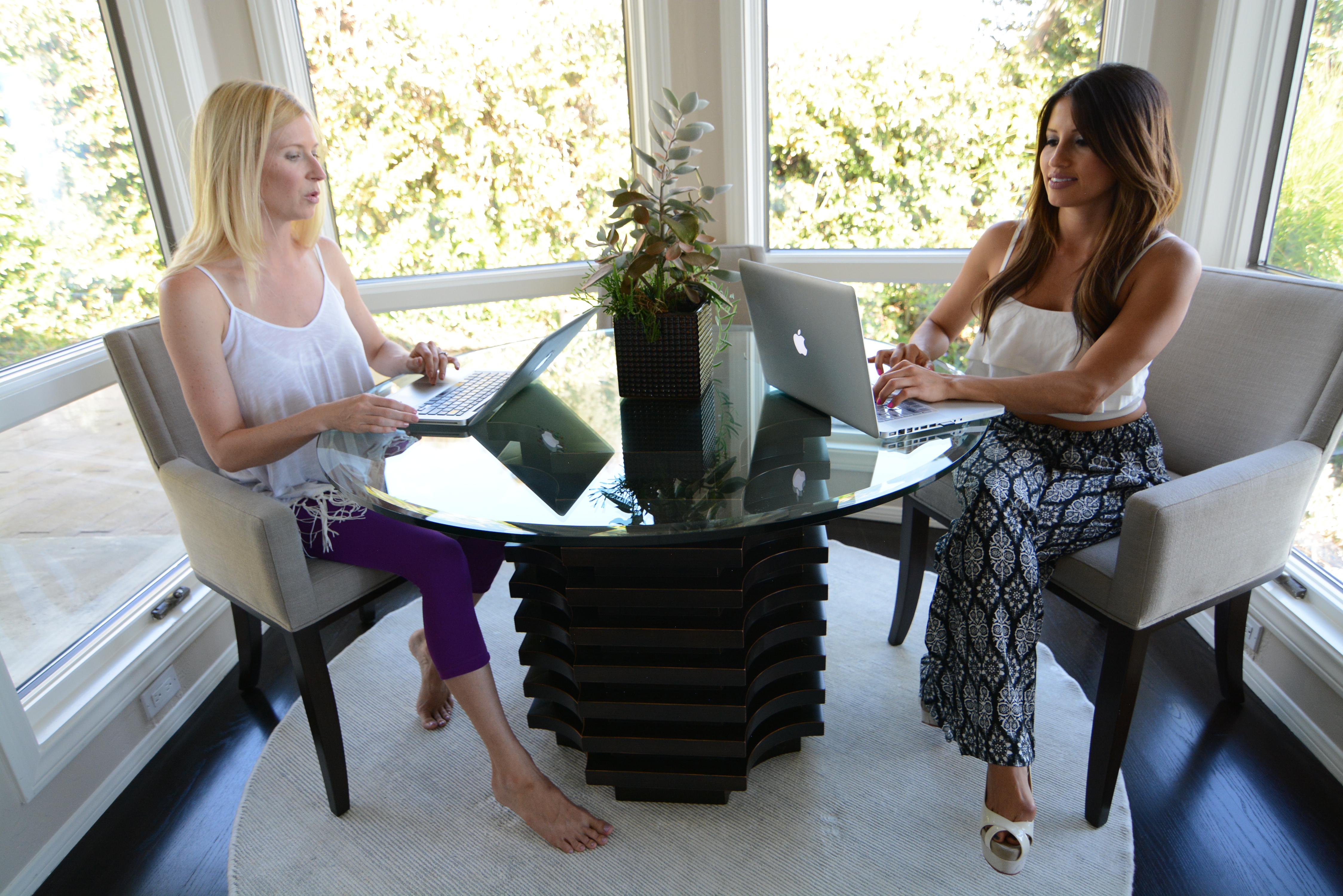
When we finished our Teacher Training many years ago we felt a sense of accomplishment and we were excited to start a new career path. However, there was still so much we didn’t understand and we had no idea where to begin. Keep reading for tips on how to get yourself established as a yoga business and what you can be doing to grow so you can create a viable source of income.
You Got Your 200-hour Certification, Now What is This Business of Yoga?
Register with Yoga Alliance
Send a copy of your certificate to Yoga Alliance so you can get your RYT (registered yoga teacher status). Application fee costs $50 and the annual/renewal fee is $55 for an initial total cost of $105.
Get Yoga Insurance
All studios require that you have yoga liability insurance. There are various carriers and they range from $75-$185 per year. Below are a few options:
Philadelphia Insurance Companies
Sports Insurance Solutions
NACAMS
Get a Business License
If you are planning on doing a Schedule C on your taxes make sure you get a business license in the city where you will be working. For San Diego you can visit:
San Diego Business License
The cost for a business license in San Diego is $34.
Make a Resume
Having a resume with your picture is really helpful for studio owners. List all of the following information in your resume: yoga experience, where you received your certification, what your strengths are, any additional certifications you have, the type of yoga you teach, your schedule availability, and testimonials from students.

Create a Website
A yoga website is like your online resume, and it makes it easy for students to find you if you are teaching at multiple locations. Keep things simple with eye-catching professional photos, your updated teaching schedule, your philosophy on yoga, and all the information found in your paper resume. You can make a site on your own by purchasing a URL and using WordPress. You can also list your job on Guru and hire a freelancer to do it for you at a very reasonable price.
Start to See Yourself as a Brand
Whether you like it or not when you become a yoga teacher you become a brand, and it’s up to you to decide what that looks like. Get really clear on what your focus is and what you have to offer. Only project the authentic “you” and never feel like you have to be anything other than that. If you are true to yourself students will be more inclined to connect and learn from you.
How to Get Yoga Teaching Jobs
Start Teaching Right Away
It’s important to start teaching immediately after teacher training is over so you don’t forget everything you just learned. The gap between your last day of teacher training and the day you teach your first official class is crucial. Keep the momentum going and get some much-needed experience by scheduling some classes with your friends, family, co-workers or anyone willing to practice with you! Try teaching free yoga at the park, or sign someone up for a few complementary privates while you give yourself time to get comfortable.
Once You Have Your Yoga Resume Ready Follow These Simple Steps to Secure Some Group Classes at Gyms or Studios
Create a spreadsheet with a list of all gyms, businesses, and yoga studios where you would like to teach (include columns for name, address, phone number, contact person, visits, and status).
Grab your resume and sign up to take a class with the manager or studio owner. Introduce yourself after class and give them a copy of your resume. Make a note on your spreadsheet of your visit with detailed information about who you spoke with and when you dropped off your resume so you can follow up in a few days. If you went to a studio keep in mind that you will likely be put on the sub list if you made a good impression. Some studios will have you do a short “mock” class to get a feel for how you teach. When applying at studios it’s important that you keep coming back to class so the owner doesn’t forget about you. The more they see you around the more likely they ask you to sub.
Continue making your rounds with attending classes and handing out resumes until you have visited every location on your spreadsheet. Keep following up.
If you are able to get some teaching gigs at gyms, create a mailing list to let your students know about events and upcoming classes. When you build a following at gyms your students will get curious about studio classes and you’ll start seeing them migrate over so it’s important to stay connected.
Creating an Online Presence
Social media is a great way to get the word out about your classes with the added benefit of educating followers about yoga. Get a yoga page going on Facebook, Instagram, Twitter and anywhere else you think suitable. Try to balance promotional posts with informative posts so you don’t turn people off with excessive marketing. If your feed is interesting and educational, students are more likely to attend whatever it is you are promoting.
Revenue Streams
Group Classes – Most studios pay anywhere between $25-$35 for group classes, with options for a per-head bonus of $2 or $3 over 8 or 10 students. Subbing usually pays a flat rate. If you can get over 10 students in your classes you can easily make over $50 per class. In the beginning you will have to teach at various locations until you build enough of a following to narrow down your home studios.

Private Classes – As a new teacher you can charge $40-$80 per private depending on the demographics of the city you’re working in. We suggest you don’t charge too low for private yoga so that it’s easier to increase prices over time as you gain more experience. If you start too low it will be much more difficult to increase prices later. An experienced teacher with over 10 years of experience can charge upwards of $150-$250 per session. Private sessions are a lot of work and you should be adjusting the student in almost every posture so there is a big distinction between what you get in group classes versus privately. You want to make your clients feel like their sessions are invaluable and extremely effective.
Workshops – Workshops are a great way to connect with your students, develop your teaching skills, and make some extra money. You don’t need to wait a certain amount of time between your graduation date and your first workshop. If you have a topic you’re passionate about, start pitching a workshops to gyms, studios, or anywhere else that will have you. Don’t be discouraged if your first workshop doesn’t sell out. It’s all about practice and jumping right in. Most 2-hour workshops cost $30-$40 and the studio will split the profits with you at 60/40 (60 to the teacher).
Retreats – Retreats can be very lucrative if they are organized and marketed properly. Retreats can be held in private homes, resorts, or yoga retreat locations. Research all costs and plan out your days and activities thoroughly so the entire event goes smoothy. In general, weekend retreats begin on Thursday night and end Midday Sunday with yoga twice a day and workshops once or twice a day. Most meals and lodging are included in the program price with optional recreational activities.
Teacher Training – After teaching over 5,000 hours you an apply for your E-RYT title (experienced registered yoga teacher) through Yoga Alliance and you are then able to certify other instructors. We recommended that you have at least 3 years of full time teaching experience before you attempt to run your own training. There are a lot of moving parts and creating a solid program requires the right team and a lot of experience.
We hope all this info comes in handy. Please email us if you have any questions and if you’re ever in San Diego come visit us at Buddhi Yoga La Jolla.

Leave a Reply
You must be logged in to post a comment.